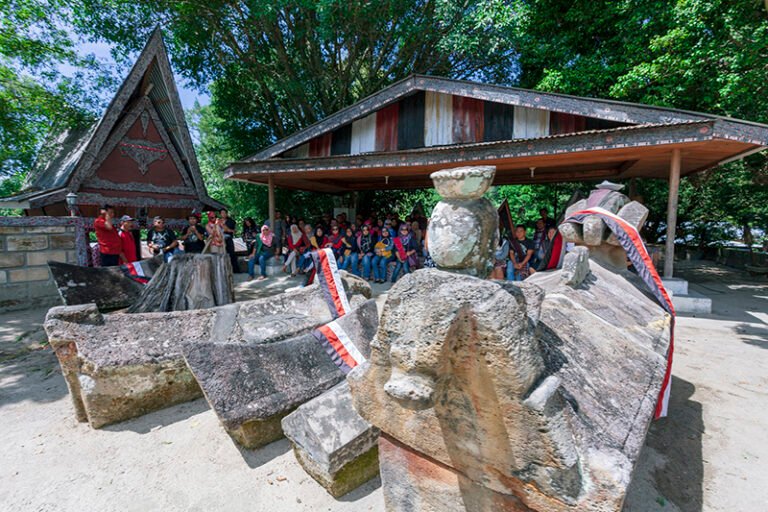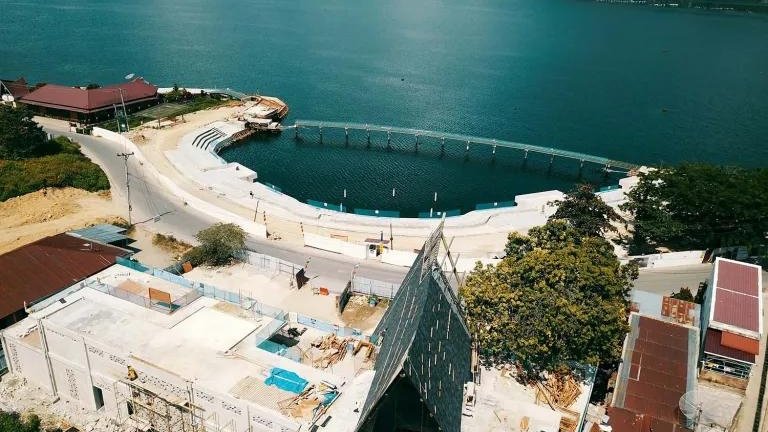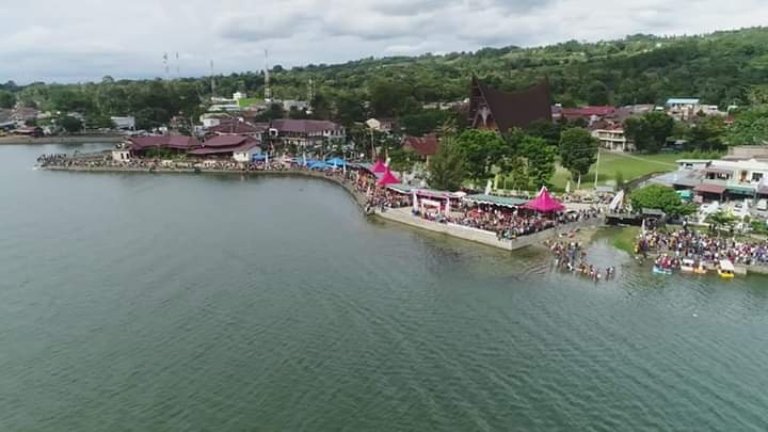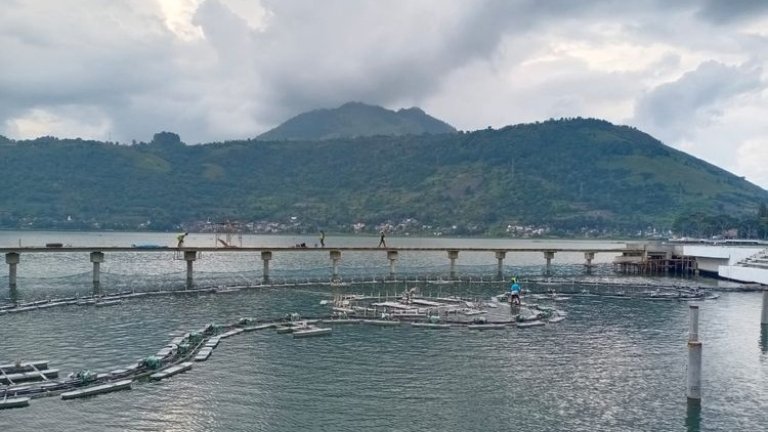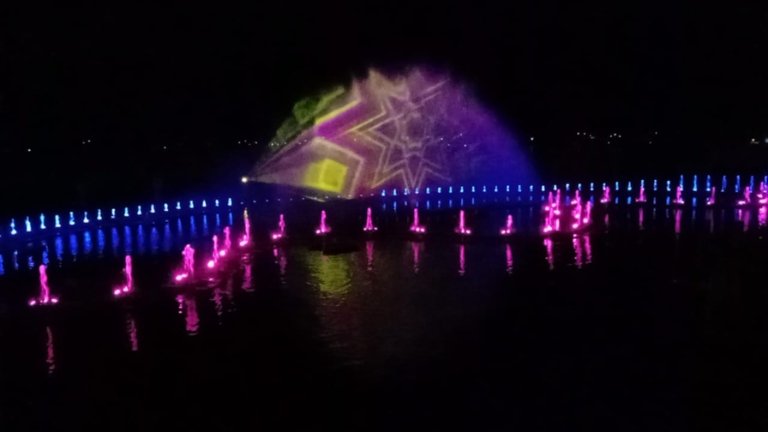This post is also available in:
![]() Indonesia (Indonesian)
Indonesia (Indonesian)
Profile
This post is also available in:
![]() Indonesia (Indonesian)
Indonesia (Indonesian)
-
Thematic: Geo-Archeo-Anthropology
- Ambarita, dacitic lava dome
- Sipalaka Siallagan, Archaeological site
- Huta Siallagan Stone chair Anthropological site
- Tuktuk, dacitic dome
- Tomok, Arsophagus
- Tomok, lake sediment
Geological Aspects
Showing the landscape of a Rio-Dasitan lava dome partially covered by lake sediments (above) and a Rio-Dasitan lava outcrop with a ‘flow-banding’ structure (below), this rock was used as a building material for the Batu Parsidangan Huta Siallagan site. A series of lake deposits found around Tomok, in this outcrop there is charcoal that is 25,000 years old.
Biological Aspects
Mangoes, in Latin Mangifera indica, are quite common in the Samosir Regency area, but the shrimp type of mango is more common. Even though the size is small, the taste is quite different compared to other types of mango, namely it feels a little sour but the sweetness is more dominant
Cultural Aspects
The Siallagan traditional village covering an area of 2,400 square meters is surrounded by walls 1.5 to 2 meters high composed of natural rocks. In the past, this wall served as a barrier to attacks from other tribes and disturbances from wild animals. This village was built by King Laga Siallagan, then passed on to King Hendrik Siallagan to the descendants of King Ompu Batu Ginjang Siallagan. In Huta Siallagan, there are 8 (eight) units of traditional Batak houses, each with a different function (king and family house, shackhouse and others), which are estimated to be hundreds of years old. This location is in the Ambarita-Tuktuk-Tomok Geosite area, besides that there is the tomb of King Sidabutar. The first person to set foot on Samosir Island is believed to be King Sidabutar. King Sidabutar’s tomb is 460 years old and is classified as a sarcophagus. Located in Ambarita Village, Samosir, this location is in the Ambarita-Tuktuk-Tomok Geosite area.
According to the parents, a Huta or village is a group of houses standing on the land of an area inhabited by several families who are connected by one family. In Batak society, where the clan is an identity that will explain the origins of the kinship, the Huta or village is also built as an identity for the place of residence, whereupon the huta will be named the huta clan. Likewise, the Siallagan clan (descendants of King Naiambaton, the lineage of King Isumbaon, the second son of the Batak King) built a huta/village called Huta Siallagan which was built by the Siallagan clan family which was controlled by a leader, namely King Huta, in this case King Siallagan . The construction of the Siallagan huta is said to have been carried out in mutual cooperation on the initiative of the first huta king, namely King LAGA Siallagan and then passed on to his descendants, King Hendrik Siallagan and so on to the descendants of King Ompu Batu Ginjang Siallagan. The construction of the huta using large stones arranged in layers to form a large wall which later became a fort and on top of which bamboo was planted (for the Batak people, bamboo has multi-purposes like other Indonesian tribes). In the past, to build a traditional Batak house, it was also done by working together to transport wood from the forest or family fields, then erecting it according to the shape and rules for building a traditional Batak house. Siallagan Huta, located in Ambarita Village, Simanindo District, Samosir Island, Samosir Regency, located 150 m from the edge of Lake Toba, Eastern Samosir Island, 3 km from Tuktuksiadong (hotel center) or 5 km from Tomok hut/village (Ferry pier ) while via the lake is 12 km from the city of Parapat. The area of the Siallagan hut is estimated to be 2,400 square meters, with an entrance gate from the southwest and an exit gate from the east. This hut is surrounded by natural stone walls with a height of 1.5 – 2.00 meters which are arranged neatly. In the past, as mentioned earlier, this 1-2 meter wide wall was planted with bamboo to protect the forest from wild animals and criminals. From the entrance there is a large stone statue which is believed to be a guardian and ward off evil spirits who want to enter the hut, this statue is called Pangulubalang. In the past, the people who lived in the Siallagan huta, including King Siallagan, still adhered to the original Batak religion (Parmalim religion).
Terkait
Map
Sorry, no records were found. Please adjust your search criteria and try again.
Sorry, unable to load the Maps API.


